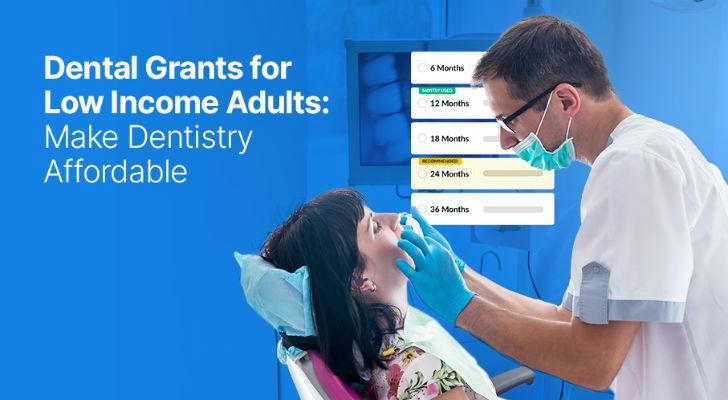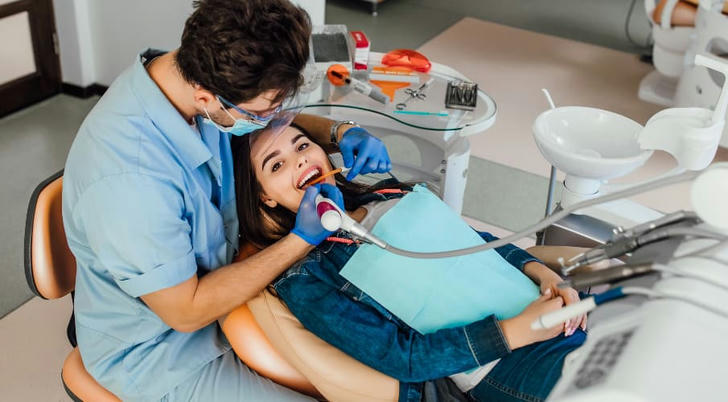Dental Implant Grants: How to Make Your Smile Affordable
Nearly 40% of adults are burdened with debt from medical or dental bills, and it’s easy to see why, given the high costs of treatments. However, that shouldn't discourage anyone from seeking necessary procedures—especially those that affect daily life or have lasting consequences, like dental implants. This is where the need for alternative ways to access care, without falling into a debt cycle, becomes critical.
If you've been searching for phrases like "affordable dental implants near me," "dental implant assistance programs," or "charities that help with dental expenses," you're in the right place! In this article, we’ll dive into affordable dental implant options, including programs that help reduce costs. Plus, we’ll address the most common question: "Where can I find low-cost dental implants near me?"

What Are Dental Implants?
Dental implants are titanium posts surgically placed into the jawbone, where they function as artificial tooth roots. Over time, the bone fuses with the titanium, creating a solid foundation for a crown, bridge, or even dentures. The result is a long-lasting, functional replacement tooth that looks and feels just like the real thing.
While dental implants are one of the most effective solutions for replacing missing teeth, they can be expensive. On average, a single implant can cost anywhere from $3,000 to $4,500, with additional costs for the crown or bridge. If you need multiple implants, the total cost can quickly add up, making it seem like an impossible expense.
How Do Dental Implant Grants Work?
Dental implant grants are financial assistance programs designed to help individuals cover the cost of dental implants. These grants are typically offered by non-profit organizations, dental schools, and sometimes even government programs. While grants won’t usually cover the full cost of the procedure, they can significantly lower the financial burden, making implants more accessible for those who need them.
Grants are typically awarded based on criteria like financial need, medical necessity, or specific geographic location. They help individuals who might not otherwise be able to afford dental implants get the treatment they need to restore their smile.
Where to Find Dental Implant Grants
1. Dental Schools and Teaching Hospitals
One of the most affordable options for getting dental implants is through dental schools. Many dental schools offer treatment at reduced rates because students, supervised by experienced faculty, perform the procedures as part of their training. This can be a great option for people who want to save money but still receive high-quality care.
In addition, some dental schools offer grants or subsidies to help cover part of the cost of dental implants. This is especially helpful for individuals who are low-income or unable to pay the full price for treatment.
How to Find Them: Check with dental schools in your area to inquire about their implant programs and financial assistance options. Many schools also have websites where you can find more information about applying for reduced-cost treatments.
2. Non-Profit Organizations
Several non-profit organizations are dedicated to helping people access affordable dental care. These organizations may offer grants for dental implants or subsidies to help cover some of the costs. Many programs focus on helping low-income individuals, the elderly, or people with disabilities, although some may offer broader eligibility.
For example, the Dental Lifeline Network helps provide dental care for people with disabilities, the elderly, and those with chronic medical conditions. Another example is the Smiles for Everyone Foundation, which provides dental treatments, including implants, to those in need.
How to Find Them: Start by searching online for non-profits that assist with dental care or contact your dentist for recommendations. Organizations like the Dental Lifeline Network and Smiles for Everyone are great places to begin your search.
3. Government Programs
While it’s not common, there are some government programs that may help with the cost of dental implants. Medicaid, for example, may cover dental implants in specific cases, depending on the state and the medical necessity. However, the coverage for dental implants varies significantly from one state to another, so it's important to check with your state’s Medicaid program.
Some states also have local programs that provide financial assistance for dental treatments. These programs might be funded by state health departments, community health centers, or other public agencies.
How to Find Them: If you are eligible for Medicaid, reach out to your state’s Medicaid office to find out if dental implants are covered. You can also contact local health departments or dental clinics to inquire about available programs in your area.
4. Veterans’ Assistance Programs
Veterans may have access to dental care benefits through the Department of Veterans Affairs (VA). While dental implants are not always covered by VA benefits, some veterans may be eligible for dental implants if they have a specific medical condition or if the implants are deemed necessary for health reasons.
For veterans, the VA’s dental care benefits can help offset the cost of dental implants, but eligibility requirements are strict. If you're a veteran and need dental implants, it’s worth investigating the VA’s benefits to see if you're eligible for assistance.
How to Find Them: To find out if you qualify for dental care benefits, contact your local VA office or visit the VA’s website to learn more about the specific dental benefits available to veterans.
How to Apply for Dental Implant Grants
The application process for dental implant grants varies depending on the program, but it generally follows a similar pattern:
1. Check Eligibility: Each program has specific eligibility requirements, such as income restrictions or medical needs. Carefully review these criteria before applying to ensure you qualify for assistance.
2. Gather Documentation: Most programs will require documentation to verify your financial need, medical history, or the necessity of the implants. This could include things like proof of income, a letter from your dentist, or medical records related to your dental health.
3. Submit Your Application: Once you have the necessary documents, submit your application. Many programs have online applications, but others may require you to mail in your materials.
4. Wait for Approval: After you submit your application, you’ll typically need to wait for the organization to review it. If you’re approved, the grant will help cover a portion of the costs, and you’ll receive information about the next steps in the treatment process.
Additional Ways to Afford Dental Implants
In addition to grants, there are several other ways to make dental implants more affordable:
Payment Plans: Many dental offices offer financing options or payment plans that allow you to spread the cost of the implants over time. This can make the procedure more affordable by breaking it up into smaller, more manageable payments.
Dental Insurance: Some dental insurance plans cover a portion of the cost of dental implants. It’s worth checking with your insurer to see if you have any coverage for implants, as some plans offer partial benefits.
CareCredit: CareCredit is a healthcare financing option that allows you to pay for medical and dental expenses over time with low-interest or interest-free plans. This can make the upfront cost of dental implants more manageable.

Final Thoughts
Dental implants are a life-changing investment in your health and confidence, but they don’t have to be out of reach financially. Through dental implant grants, non-profit assistance, dental school programs, and government benefits, there are several ways to reduce the cost of dental implants and make them more affordable.
Don’t let the price tag keep you from getting the smile you deserve. Start by exploring the different grant programs and financial assistance options available. With a little research and persistence, you’ll be well on your way to restoring your smile and improving your quality of life.
